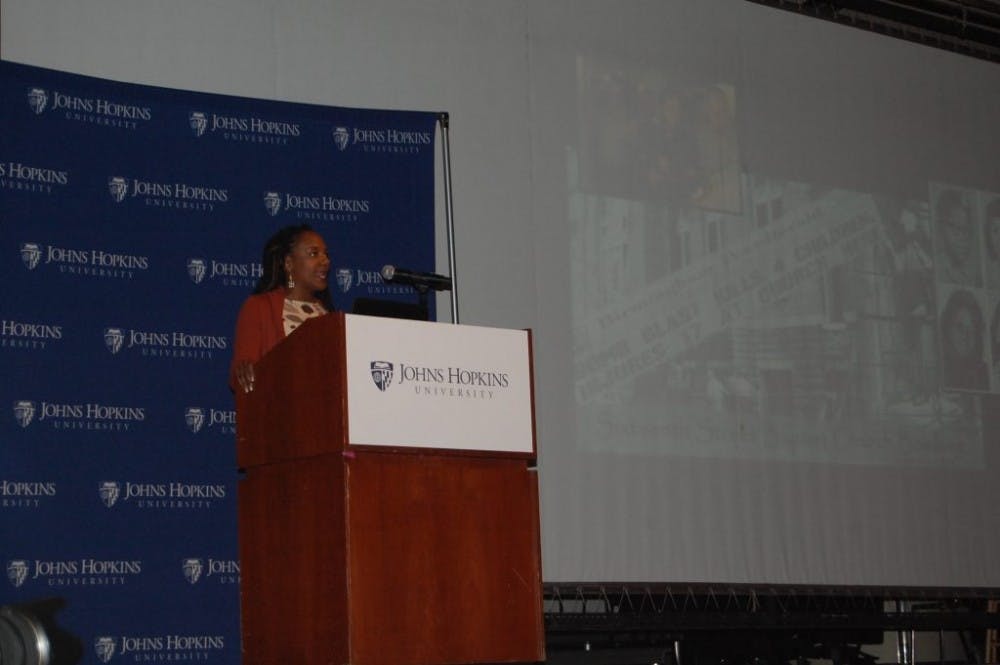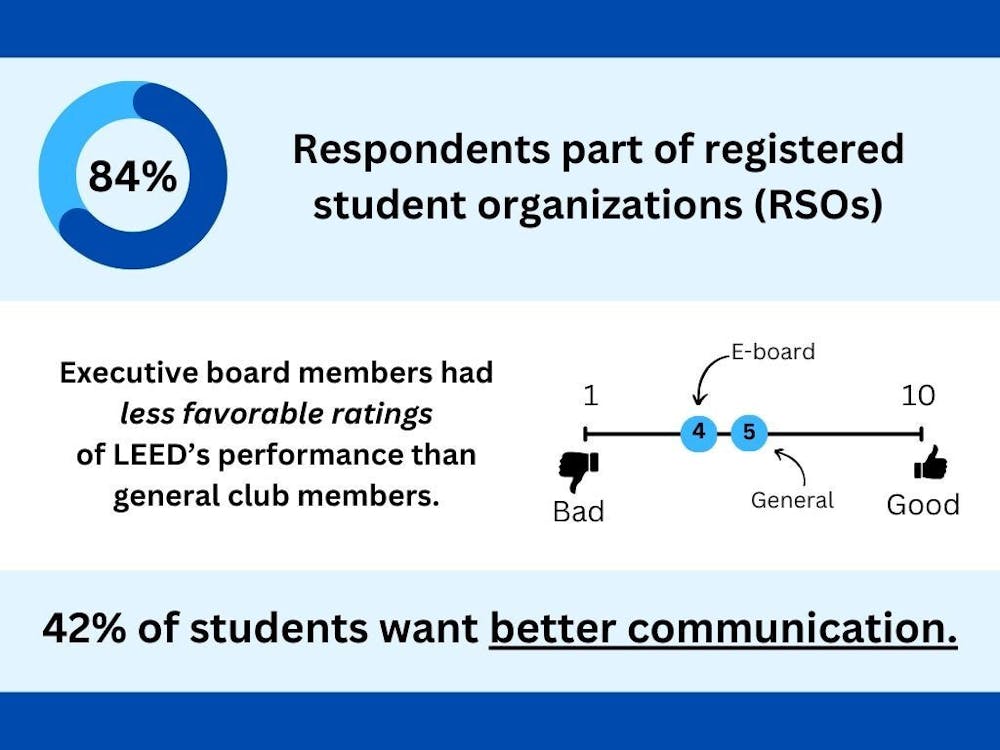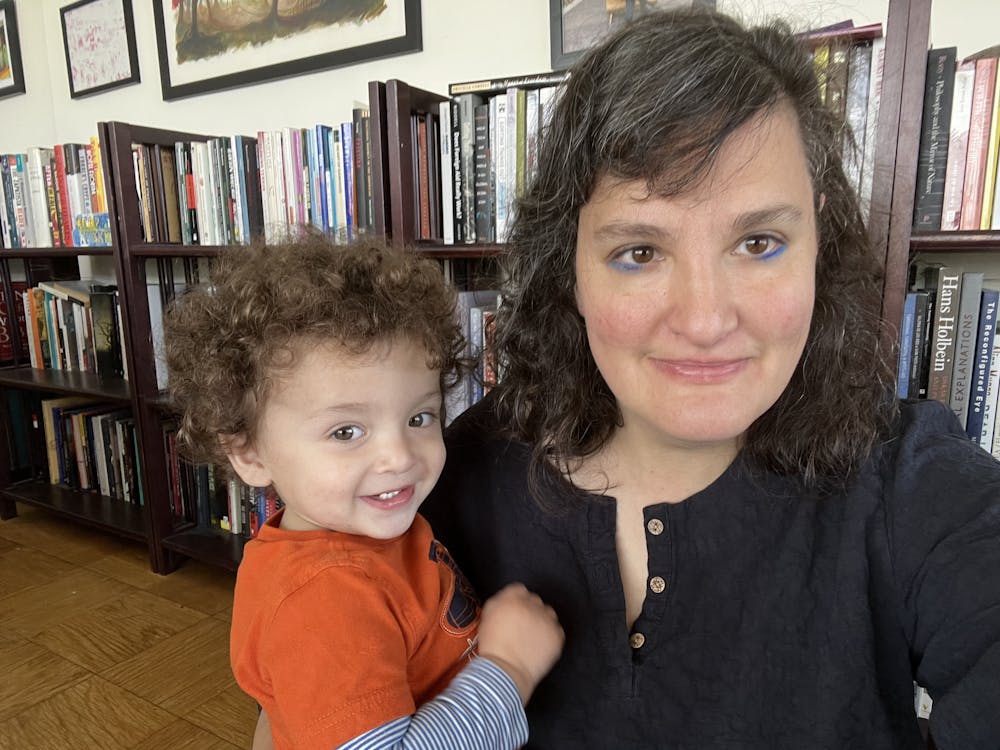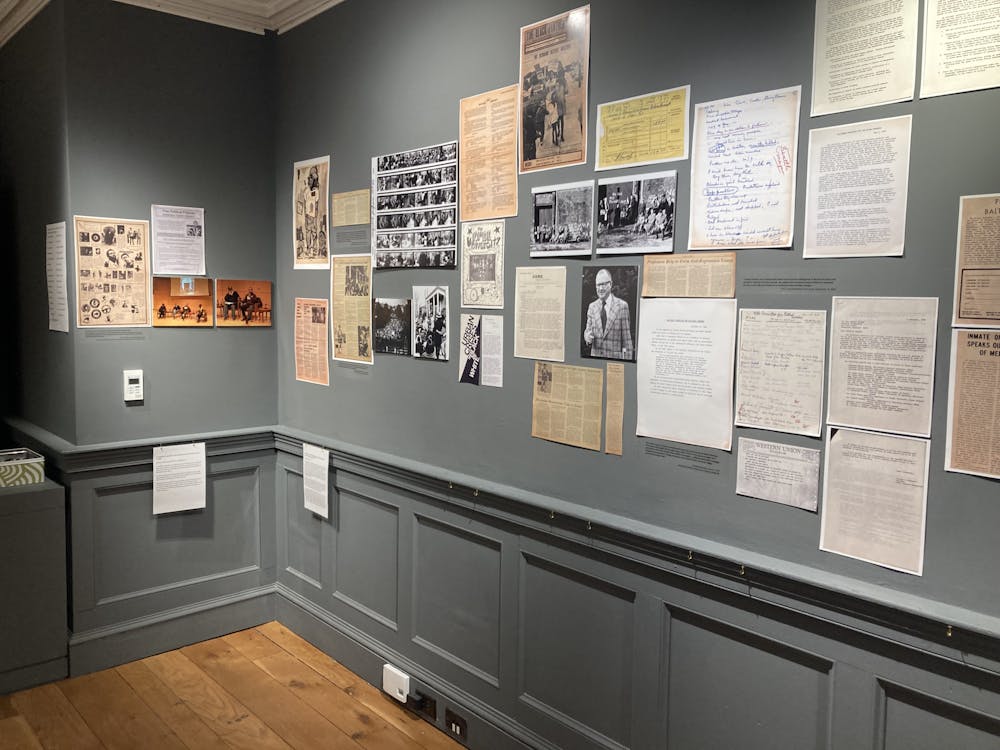Activist and filmmaker Bree Newsome spoke about her experiences as a community organizer and promoter of social justice on Wednesday at Shriver Hall.
Newsome is famous for illegally taking down the confederate battle flag at the South Carolina State House in 2015. The event was a continuation of the JHU Forums on Race in America.
Newsome began by addressing the meaning and importance of developing race consciousness in society.
“So what does it mean to be conscious? It means to be aware of unconscious behavior. I am aware that I’m a black woman, but I am also aware that race as it is understood by the United States is a social construct,” Newsome said. “I am aware that I am living in a particular place in human time and history that racism, the belief that all members of each race possess characteristics or abilities specific to that race especially in distinguishing those races as superior or inferior than other races, is a defining element of cultural consciousness.”
Newsome then shared an anecdote of how her own consciousness developed when she visited the Old Slave Mart Museum in South Carolina with her family in 2013.
“The process of going from unconscious to conscious is a choice an individual must make. It’s a process of inquiry in which one must be willing to engage to consider the reality that exists outside of one’s individual experience. The summer of 2013 was a time of awakening in my sociopolitical consciousness,” she said. “It was during that summer when my family and I visited the Old Slave Mart Museum in Charleston... [It] stirred my soul, and I felt a deeper connection to the struggle of my ancestors.”
Newsome then tied this consciousness to recent events involving race relations in America. She recalled the Supreme Court’s invalidation of the Voting Rights Act in 2013, the Charleston church shooting in 2015 and the killing of Trayvon Martin followed by the subsequent acquittal of his shooter George Zimmerman in 2013.
Specific to the Charleston church shooting, Newsome discussed the open display of the confederate battle flag in pictures of the shooter, Dylann Roof. She emphasized how the flag flew at the South Carolina State House as a hateful emblem of racism.
“Since 1962, a confederate flag flew above the state capital as a statement of white supremacist power, as a symbol of defiance against the Civil Rights movement and increasing pressure by the federal government to desegregate,” Newsome said. “The meaning of the confederate [battle] flag was never lost on me. It was a banner that first represented slavery, and after the south lost the war it became emblematic of the Jim Crow laws that would govern the South for the next hundred years.”
She then spoke about the decision to climb up the thirty-foot flag pole to remove the confederate battle flag at the state house.
“At this point, I had become an organizer in my local community and had no intentions of getting arrested again at the time, but I determined that an action to take down the flag was a cause for which I would definitely risk getting arrested again,” Newsome said. “It was with this awareness of history that we chose to attack this symbol of systemic racism with a direct action that symbolized its dismantling. We discussed it and decided to remove the flag immediately, both as an act of civil disobedience and as a demonstration of the power people have when they work together.”
She also reflected on the symbolic meaning underlying her actions as a black woman, as well as those of James Tyson, a white man, in his decision to assist her.
“It was clear that this role would be going to a black woman. We talked a bit more about the symbolism of what we wanted to communicate, and it was decided a white man should be the one to help her over the fence, put his own body over the line as a show of solidarity,” Newsome said. “We made this decision because for us, this is not simply about a flag but rather it’s about abolishing the spirit of hatred and oppression in all its forms.”
She then spoke about the importance of grassroots organizations in instigating change. She also mentioned that sustainability of organizations as well as economic and political infrastructures are important in order to build bridges between different generations of activists.
Newsome also argued that everyone had a stake in the efforts of social activists and had something to offer in bringing about justice.
“Everyone can help lead the way towards a just society. Everyone carries with them skills talents, life experience and knowledge that is valuable to his world, and everyone can apply what they have to the cause of justice. One doesn’t have to be an activist in the traditional sense of the word to be impactful,” she said. “Every person has within them the capacity to bring about change. We need all hands on deck. Everyone must ask themselves what is at stake at this time.”
To conclude her talk, Newsome referred back to her idea of consciousness and how together, people have the capacity to bring about change in the world.
“So now I’ll come back to my original question of ‘What does it mean to be conscious?’ It means to be aware of what a fantastic blessing it is to be alive in this moment, to be a human being, to be part of a species that has the power to create and shape a world where there is no hunger and thirst, where there is no violence and oppression. We are not passive bystanders in the course of time,” she said.
In the following question-and-answer session, audience members were given the opportunity to ask Newsome their individual questions.
When asked about her response to the media reaction after she pulled down the flag, Newsome spoke about how she was initially surprised at the attention her actions received.
“We knew that there was going to be national attention to the flag removal. Honestly it was at a greater level than I thought it would be,” she said. “Originally, in some ways I was a bit caught off guard. I knew I wanted to release a statement. I honestly did not want to do any news media, the whole news shows and everything, but there was so much attention on it that I couldn’t not say anything. So I made the decision to go to New York, James and I. We did a series of shows up there.”
Newsome also spoke about how she now has an elevated platform but is continuing to do the same work she had done before.
“In terms of how my life has changed since, the only real change is the platform that I have now, like that I’m speaking in places like this,” Newsome said. “The things that I’m saying, the things that I’m doing have been the same things I’ve been doing since I got in the movement.”
When asked for advice as to what students on campus could do to help, Newsome emphasized the importance of a long-term, sustainable movement.
“A lot of the conversations that I have with students are about trying to change a culture on a campus and that requires long-term commitment. I know that it is an important cause, and I really encourage students to stick to it,” she said. “I really encourage students to think long term as to how you are going to involve alumni in your struggle. What is going to be your involvement after you graduate, to follow through and make sure there are students leaders who can lead the banner and follow after you.”
Freshman Marissa Varnado found Newsome’s talk to be interesting and relevant, specifically in terms of her advice for activists on college campuses.
“I really thought it was a good talk. I thought it was well structured and awesome and poignant,” Varnado said. “I thought she also had some very good recommendations for the efforts that we have on our campus like the Black Student Union, which I am a part of. She definitely had some good practical solutions as to how to organize.”
Freshman Alyssa Chalmin praised Newsome for being an inspirational role model for instigating change at the grassroots level.
“I thought she had really valuable advice on how to help foster a long-term change of culture surrounding systemic racism,” she said. “It was really great to listen to someone who had so bravely and defiantly spoken out about racism in the United States. We have so many opportunities to be agents of change in Baltimore, and I believe she inspired everyone there to do so.”
Freshman Sean Jost echoed these positive remarks, drawing on Newsome’s ability to address the issues of race relations most relevant to the current discussion.
“I found it very interesting that she talked about modern issues and examples of race relation conflicts, as opposed to her personal story of taking down the flag,” Jost said. “I realized that this was because there really wasn’t much of a story: She was a fairly ordinary citizen who felt that she needed to take a stand about a controversial issue, so she did. I think it goes to show a lot that these kinds of symbolic measures can be taken by grassroots citizens, and not always by organized leaders. I was very impressed how she was able to divert the attention from herself towards the issues that she finds important.”
















Please note All comments are eligible for publication in The News-Letter.